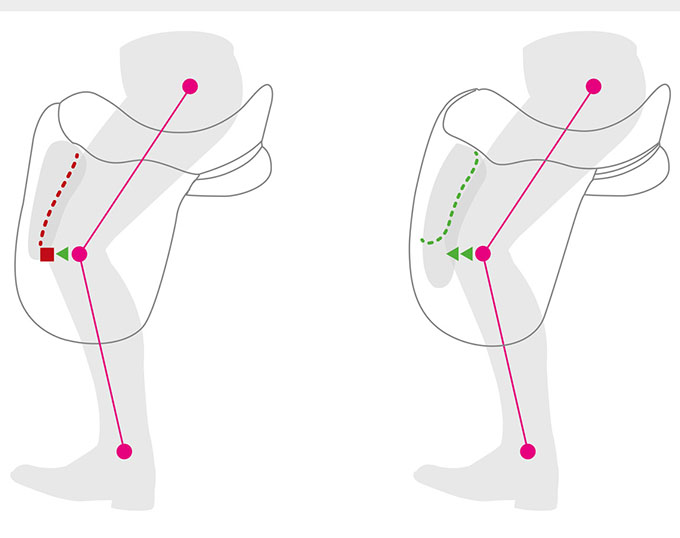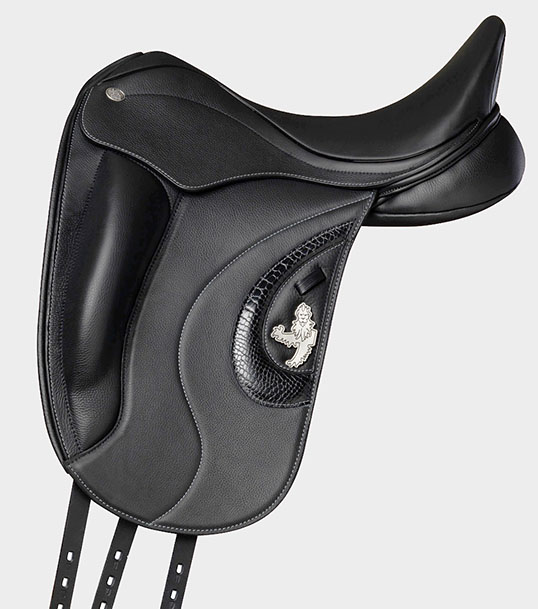
Fairfax Saddles, famous already for investigating the horse’s performance in relation to pressure, has now turned its attention to the effect the rider’s position and balance has on the way the horse moves.
Knee Block Design Affecting Rider’s Biomechanics
A recent study combining pressure mapping and biomechanical gait analysis has demonstrated that that saddle’s knee block design can have a significant effect on the rider’s biomechanics and that this, in turn, influences the horse’s way of going.
During every stride, the horse generates huge propulsive forces and in order for the rider to remain stable in the saddle, their body has to manage and absorb these forces. The rider’s joint angles change constantly as their limbs, pelvis and spine move to accommodate the horse’s movement.

This was demonstrated in trot and canter. After the suspension phase of the stride the horse’s movement propels the rider’s thigh forward pressing the knee against the block. Depending on the size and shape of the block and anatomy of the rider, this can restrict the knee. If the knee is restricted, the rider’s pelvis will be prevented from managing the horse’s movement and the segments of the rider’s body above it (eg the trunk) are forced to compensate.
Modified Knee Block Design for Better Synchronicity
Researchers tested a modified knee block design which instead of restricting the knee, allows the leg to move forward. The riders’ pelvis was able to remain in a more neutral position throughout the motion cycle and the riders were more synchronised with the movement of their horse.

The team went on to demonstrate the effect that knee block design and the resulting altered rider biomechanics can have on the horse. When the knee is unrestricted and the pelvis is in a more neutral position the rider has a more consistent seat and the horses in the study showed improved back movement (lumbar lateral bend) and limb kinematics in trot and canter.
Fairfax World Class Saddle
The Fairfax World Class saddle features the modified knee block and seat configuration.

17" petite, standard, long
171/2" petite, standard, long
18" standard, petite
A croc print trim option is also available
€4,250
www.fairfaxsaddles.com to find a local Fairfax saddle fitter. Contact info@fairfaxsaddles.com for more information